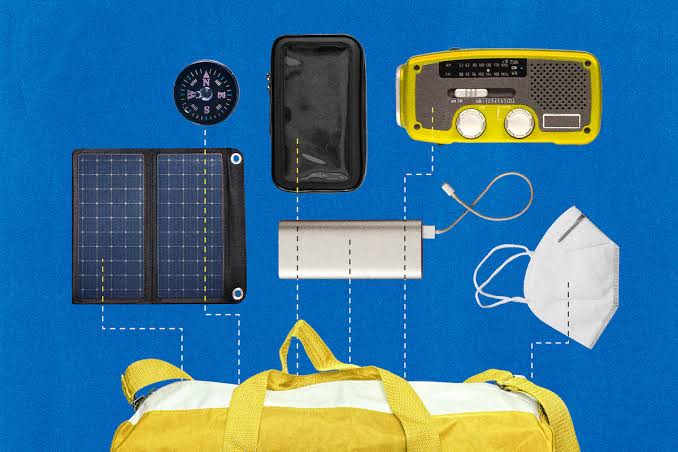In the digital era, gadgets have become essential tools for communication, entertainment, productivity, and education. From smartphones and laptops to smart home devices and wearable technology, these tools have transformed the way people live and work. While they bring undeniable benefits, their increasing production, use, and disposal raise significant concerns about environmental sustainability. The demand for more advanced gadgets continues to rise, and so does their environmental footprint. Understanding this impact is essential for creating strategies that balance technological innovation with ecological responsibility.
The Environmental Cost of Gadget Production
The production of gadgets involves resource-intensive processes that place a heavy burden on the environment. The extraction of raw materials such as lithium, cobalt, and rare earth metals is necessary for making batteries, screens, and circuit boards. Mining these materials often leads to deforestation, soil degradation, and water contamination, creating long-term ecological damage.
In addition, gadget manufacturing consumes enormous amounts of energy. Factories rely heavily on electricity, much of which is still generated from fossil fuels. The carbon emissions associated with production contribute significantly to global warming. Moreover, the transportation of gadgets from factories to global markets adds another layer of greenhouse gas emissions.
Energy Consumption During Use
Beyond manufacturing, gadgets continue to affect the environment during their usage phase. Smartphones, laptops, gaming consoles, and streaming devices require constant charging, consuming electricity on a daily basis. While individual energy use may seem minimal, the collective impact is enormous, especially with billions of users worldwide.
The demand for cloud-based services has further amplified energy consumption. Data centers that store and process information for apps, streaming platforms, and online services require vast amounts of electricity to operate and cool servers. Even small actions like watching high-definition videos or storing large amounts of data online contribute to increasing carbon footprints.
Electronic Waste Challenges
One of the most pressing environmental issues linked to gadgets is electronic waste, commonly known as e-waste. As new models are released frequently, many users discard older devices prematurely, creating massive amounts of waste. E-waste is often not disposed of responsibly and ends up in landfills, where toxic substances such as lead, mercury, and cadmium can leak into soil and water sources.
Improper recycling practices also pose health risks to communities, particularly in developing countries where informal recycling sectors handle discarded electronics. Exposure to hazardous materials during unsafe recycling methods endangers workers and pollutes the surrounding environment. The fast pace of technological advancement has made e-waste one of the fastest-growing waste streams in the world.
Packaging and Shipping Impact
Another environmental concern lies in the packaging and distribution of gadgets. Excessive use of plastics, cardboard, and non-recyclable materials contributes to waste generation. Shipping gadgets across continents involves fuel consumption and emissions from cargo ships, airplanes, and trucks. While companies are beginning to explore more eco-friendly packaging solutions, the problem remains widespread in the electronics industry.
Positive Contributions of Gadgets to Sustainability
Despite the challenges, gadgets also play a role in promoting environmental sustainability when used strategically. Smart home devices such as energy-efficient thermostats, lighting systems, and appliances help reduce energy waste. Wearable devices that track energy consumption and environmental conditions also encourage users to adopt greener habits.
Digital tools reduce the need for paper by enabling e-books, digital records, and online communication. Remote work technologies, such as video conferencing and collaboration platforms, reduce the need for commuting and business travel, thereby lowering carbon emissions. Gadgets have also made it easier to raise awareness about environmental issues through social media campaigns, educational apps, and online activism.
Corporate Responsibility and Green Innovations
Technology companies are increasingly recognizing their responsibility to address environmental concerns. Many brands are now committing to using recycled materials, adopting renewable energy in production, and designing products with longer lifespans. Some companies are introducing modular gadgets that can be repaired or upgraded easily, reducing the need for frequent replacements.
Examples of eco-friendly practices include:
- Using recycled aluminum or plastics in device manufacturing
- Offering trade-in and recycling programs for old gadgets
- Switching to renewable energy sources in production facilities
- Designing energy-efficient processors and batteries
- Exploring biodegradable or minimal packaging materials
These initiatives demonstrate how the industry can innovate to reduce its environmental footprint while still meeting consumer demands.
Role of Consumers in Sustainability
While companies play a large part, consumers also have a significant role in reducing the environmental impact of gadgets. Conscious buying decisions and responsible disposal practices make a difference. Instead of upgrading to the latest model every year, extending the use of devices helps cut down waste. Proper recycling and participation in manufacturer take-back programs ensure gadgets are disposed of safely.
Consumers can also adopt energy-saving habits, such as:
- Unplugging chargers when not in use
- Adjusting settings for lower power consumption
- Using energy-efficient accessories and devices
- Limiting unnecessary upgrades and purchases
By making small lifestyle adjustments, individuals can contribute to reducing the collective burden of gadget use on the environment.
Policy and Global Regulations
Governments and international organizations also play a crucial role in addressing the environmental challenges posed by gadgets. Policies that regulate e-waste management, encourage recycling, and hold manufacturers accountable are essential for long-term sustainability. In recent years, some regions have introduced stricter recycling laws and requirements for eco-friendly product designs.
Global collaborations are pushing for extended producer responsibility, where manufacturers remain accountable for a device throughout its life cycle. Such measures encourage companies to prioritize durability, repairability, and recyclability in gadget design. Stronger regulations also help ensure safer recycling practices that protect both workers and the environment.
Conclusion
Gadgets have become an inseparable part of modern life, but their impact on environmental sustainability cannot be ignored. From resource extraction and energy use to e-waste challenges, the digital age carries a heavy ecological cost. However, with conscious manufacturing, responsible consumption, and supportive policies, it is possible to minimize these effects. By adopting eco-friendly practices, both companies and consumers can strike a balance between technological progress and environmental protection. Ultimately, building a sustainable future requires shared responsibility, where innovation goes hand in hand with the planet’s well-being.




Nice
Nice